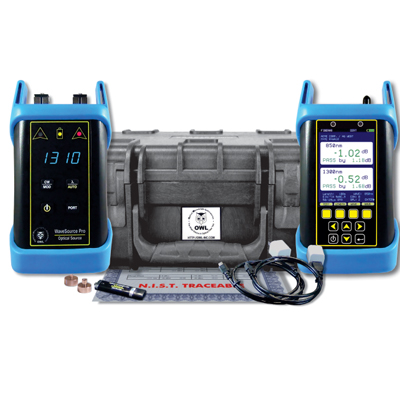Vital Features to Search For in Optical Fiber Testing Equipment
When reviewing optical fibre screening devices, numerous crucial functions warrant mindful consideration to make certain ideal performance and dependability. Compatibility with existing market requirements boosts performance, while innovative measurement abilities, consisting of TDR and OTDR testing, deal critical understandings right into network integrity. Recognizing these features will lose light on how to select the appropriate equipment for your certain demands.
Accuracy and Accuracy
Precision and precision are important parameters in the examination of optical fibre testing devices. These 2 characteristics guarantee that dimensions reflect truth efficiency of fibre optic systems, which is crucial for effective network installment, upkeep, and troubleshooting. Accuracy refers to the nearness of a determined worth to the real value, while precision signifies the repeatability of measurements under the same problems.
When picking optical fiber testing equipment, it is important to think about tools that provide high accuracy and precision to reduce errors in information interpretation. Gadgets such as optical time-domain reflectometers (OTDRs) and power meters should have calibration systems to make certain regular efficiency with time. Additionally, the specs offered by makers must detail the devices's measurement uncertainty, which straight influences the integrity of examination results.
Additionally, the performance of optical fibre screening tools can be affected by environmental elements, such as temperature and moisture. Choosing tools created to reduce these variables will improve dimension integrity. To conclude, investing in optical fiber screening equipment with durable precision and precision attributes is essential for maintaining optimum network efficiency and making sure the stability of fiber optic interactions.

User-Friendly User Interface
The efficiency of optical fiber testing devices is not only identified by its precision and accuracy; an user-friendly user interface plays a significant function in improving functional efficiency. A properly designed user interface simplifies the interaction in between the service technician and the devices, permitting a more user-friendly understanding of intricate features.
Key functions of an easy to use user interface consist of clear navigation menus, rational designs, and conveniently obtainable controls. These elements allow service technicians to execute examinations swiftly without extensive training, decreasing the probability of customer mistake - ofda. Aesthetic indicators such as progression bars, signals, and graphical representations of information can significantly enhance the customer experience by providing prompt responses on the screening procedure.
Furthermore, adjustable settings can further streamline procedures by permitting individuals to change parameters according to specific testing demands. This flexibility not just saves time yet additionally ensures that the equipment fulfills diverse application demands.
Incorporating aid features, such as tooltips and detailed manuals, right into the interface can better encourage customers, promoting self-sufficiency and self-confidence in running the tools. Ultimately, a straightforward user interface is essential for optimizing the possibility of optical fiber testing equipment, bring about more efficient and effective testing results.
Mobility and Longevity
Transportability and durability are crucial features of optical fibre screening equipment, ensuring that it can hold up against the rigors of different settings while continuing to be simple to transport. Technicians commonly operate in varied settings, from telecommunications hubs to remote installations, making it necessary that testing tools are light-weight and small (ofda). Devices made with transportability in mind typically includes ergonomic handles and cases that promote effortless activity, hence boosting operational effectiveness on-site
Durability is equally important, as optical fiber screening tools is frequently exposed to rough problems, including temperature variations, dampness, and physical effects. Devices constructed with tough materials such as enhanced plastics or metal real estates are better fit for these settings, lessening the threat of damages during use and transportation. In addition, devices with water and dirt resistance scores, such as IP rankings, ensures reliable efficiency in difficult conditions.
Compatibility With Criteria
Making sure compatibility with market criteria see this website is crucial for optical fibre screening devices, as it directly influences the dependability and validity of examination results. Optical fiber networks go through stringent efficiency criteria developed by various companies, including the Telecoms Industry Organization (TIA) and the International Electrotechnical Commission (IEC) Examining devices has to stick to these standards to make sure that measurements correspond and comparable throughout various systems and atmospheres.
When picking optical fibre screening equipment, individuals need to confirm that the tool meets appropriate standards significant to their particular application, such as those relevant to attenuation, transmission capacity, and crosstalk. Equipment that is compliant with well-known standards not just aids in achieving precise outcomes however additionally facilitates interoperability among tools from various producers.
In addition, compatibility with criteria guarantees that the devices can be go to this web-site made use of in regulatory compliance situations, which is essential for projects in industries such as telecoms, aerospace, and army applications. Investing in optical fibre testing tools that aligns with present market requirements is an essential element of preserving high quality assurance and accomplishing ideal network performance.
Advanced Measurement Capabilities
Advanced measurement capabilities are a defining feature of modern optical fiber screening tools, permitting for thorough evaluation of network efficiency. These abilities make sure that professionals can examine essential criteria such as signal loss, diffusion, and data transfer, which are important for maintaining optimal interaction performance.
One trick element is the capability to conduct time-domain reflectometry (TDR) and optical time-domain reflectometry (OTDR) tests. These strategies make it possible for individuals to determine faults, gauge the size of fibres, and identify the location of issues with exceptional precision - ofda. Advanced tools commonly includes the ability to determine optical power levels, aiding to analyze the total health of the read network and make certain conformity with the required specifications.
Furthermore, some screening tools offer sophisticated formulas for real-time evaluation, making it possible for quicker medical diagnosis and troubleshooting. In conclusion, investing in optical fibre testing devices with sophisticated dimension capacities is essential for guaranteeing network dependability and performance in today's requiring telecoms landscape.
Final Thought

Comments on “Advanced Robotic Vision Solutions for Seamless Automation Systems”